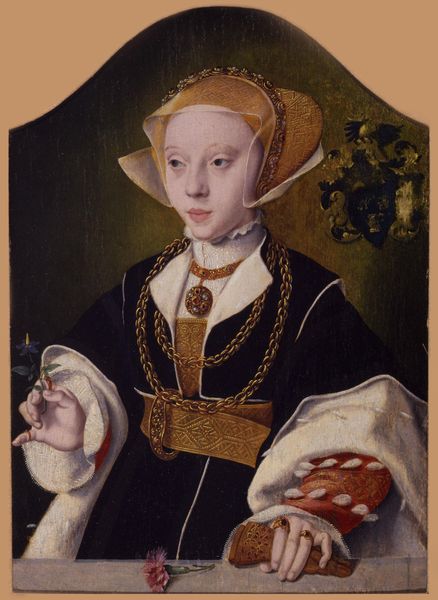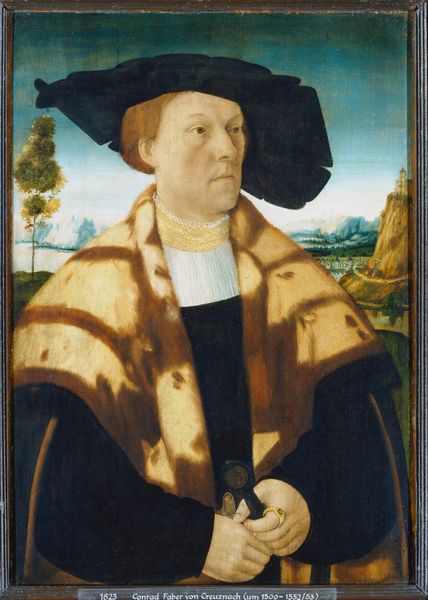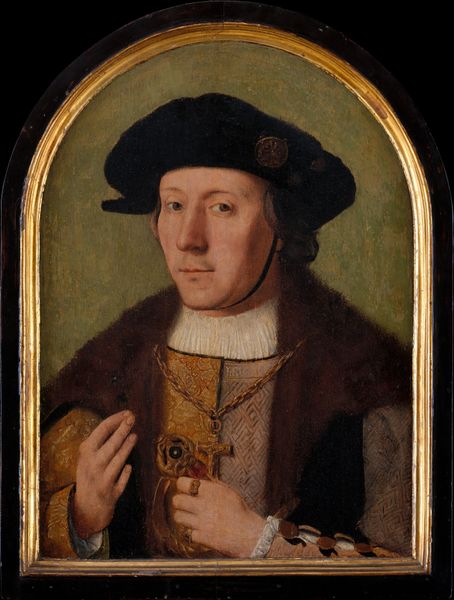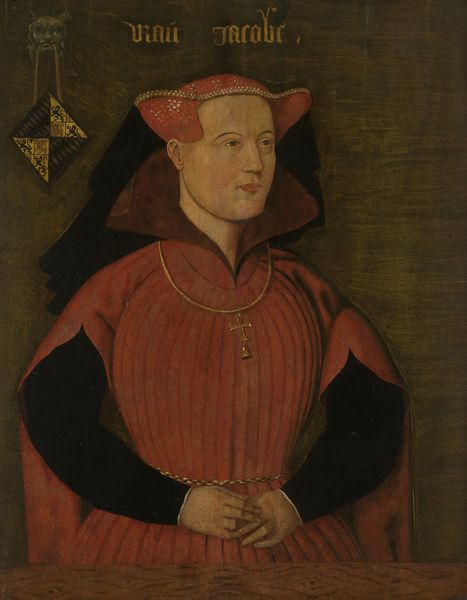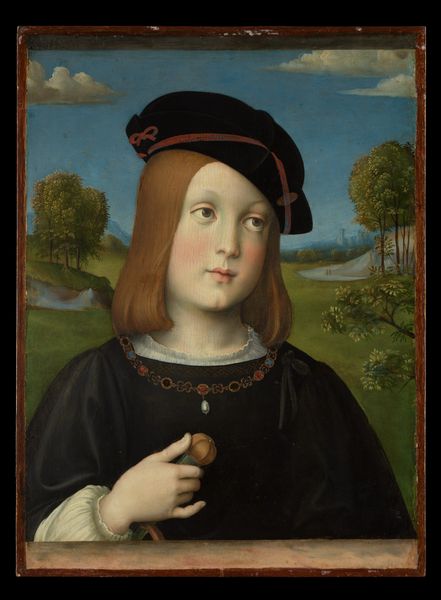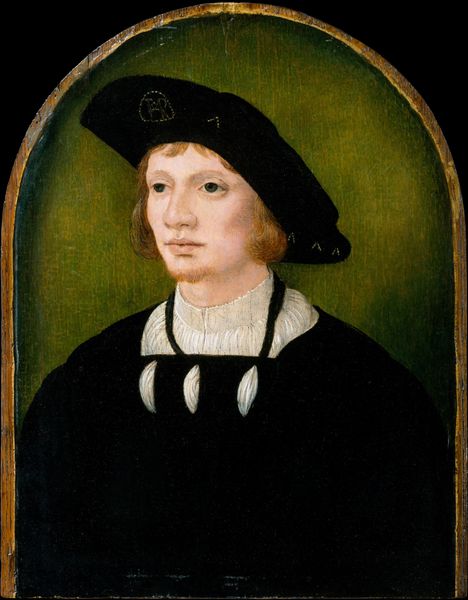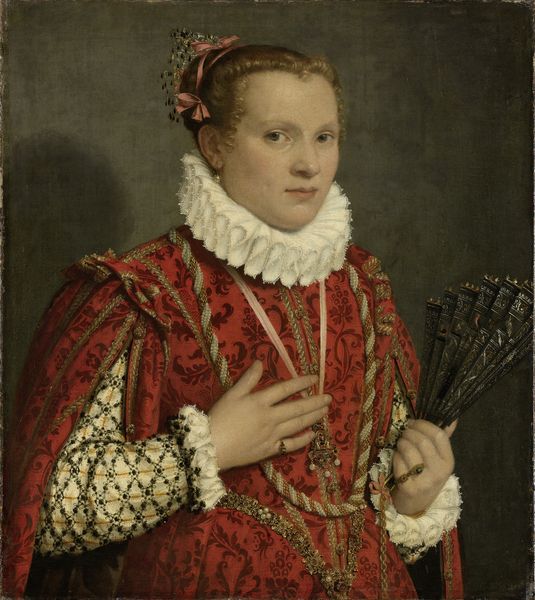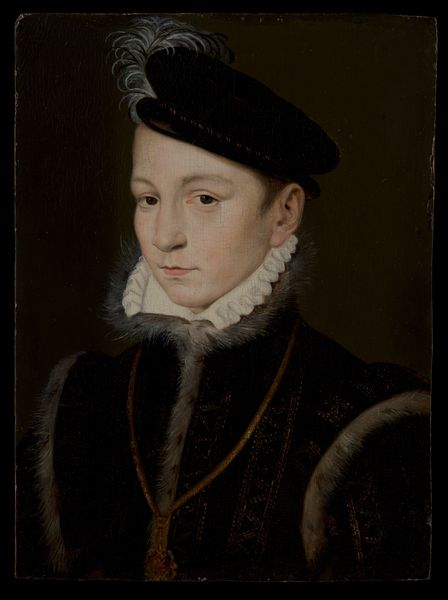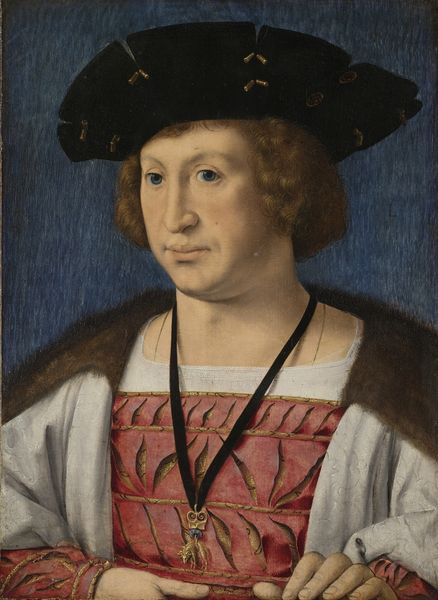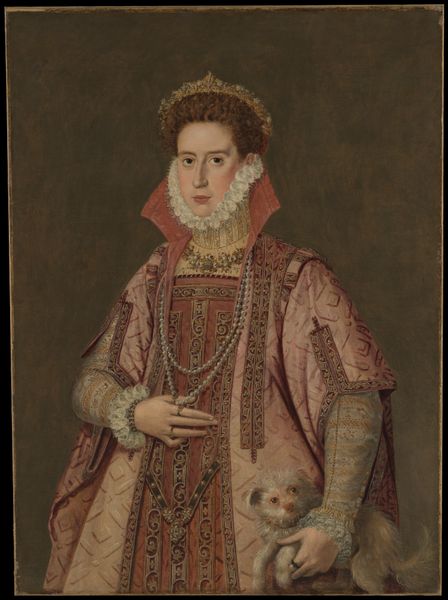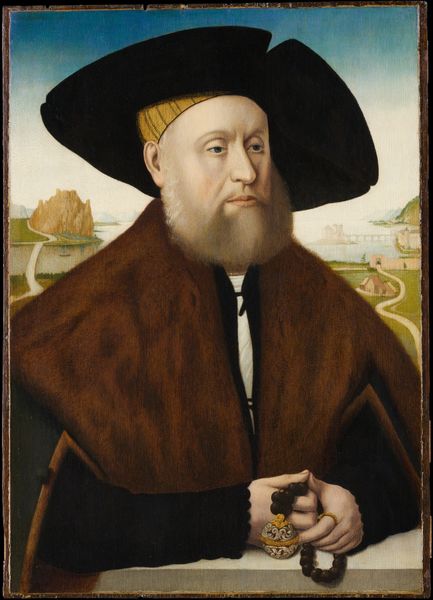
tempera, painting, oil-paint
#
portrait
#
tempera
#
painting
#
oil-paint
#
northern-renaissance
#
portrait art
#
realism
Dimensions: Overall, with arched top, 12 x 8 7/8 in. (30.5 x 22.5 cm); painted surface 11 3/4 x 8 1/8 in. (29.8 x 20.6 cm)
Copyright: Public Domain
Curator: Here we have Barthel Bruyn the Elder’s "Portrait of a Woman," painted in 1533. It's an oil and tempera painting currently housed at the Metropolitan Museum of Art. Editor: It’s quite striking, actually. A serene yet somber mood comes to mind. There's an intensity in her gaze, a kind of quiet strength. The colors are muted, adding to that feeling of subdued dignity. Curator: Absolutely. The composition is standard for Northern Renaissance portraits. Note the careful rendering of fabrics—the velvet of her dress, the gold embroidery. Bruyn was exceptionally skilled in capturing texture and light, reflective of his commercial acumen in workshop production. Editor: Yes, you can almost feel the weight of the fabric, the coolness of the gold. Her clothing signals status, which tells us a lot about her societal role in 16th-century society, right? Her gaze deviates from direct engagement with the viewer which complicates any access to power or subjectivity in the picture. Curator: Precisely. These portraits were often commissions to mark betrothals or other important family events. Examining his methods of production alongside workshop members complicates easy authorial designations. Editor: It would be really fascinating to investigate archival records: account ledgers, workshop inventories… Anything revealing production and consumption practices of portraiture from the 16th Century could radically shift our understanding. And her hand, delicately holding the flower. The carnation's association with love and fidelity likely hints at her marital status. Curator: The inclusion of the carnation, indeed, offers narrative detail to enhance her representation. Also, tempera underpainting techniques common to Bruyn and his peers ensured durable paint layers, contributing to its lasting presence. Editor: I agree, knowing this painting hangs at the Met emphasizes its cultural importance. The social, economic, and political circumstances surrounding art always shape its role within a society. Curator: Studying process really provides the chance to link artmaking practices to market forces, thus transcending narrow stylistic analyses. Editor: Yes, reflecting on the social history and materiality provides an ever-greater appreciation for not just the art, but the forces surrounding it. Curator: Indeed. I now realize more profoundly that art is a material reflection of its era, imbued with layers of labor, history, and cultural identity.
Comments
No comments
Be the first to comment and join the conversation on the ultimate creative platform.
